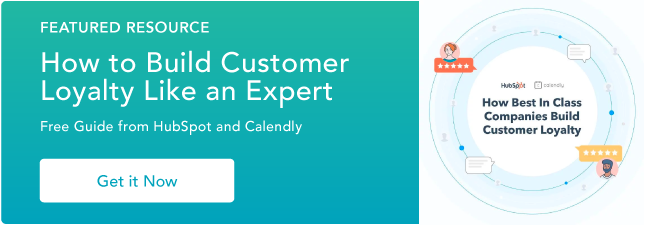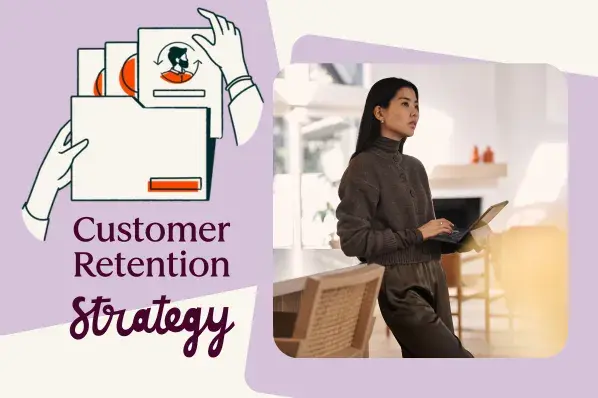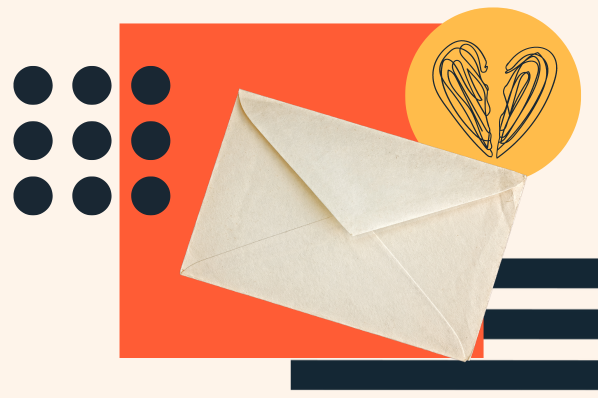In this piece, we’ll break down the benefits of retention and new customer acquisition, take a look at the customer retention formula and offer 15 strategies to help your teams keep customers coming back. Use the links below to jump to the sections that interest you.
What is a SaaS Customer Retention Rate?
SaaS Customer Retention Strategies
Retention vs. Acquisition
Along with retention, customer acquisition is also critical for business success, since more customers mean more revenue, which means a greater opportunity to expand in your target market.
For many companies, however, the drive to acquire new customers trumps the focus on existing clients. At first glance, there’s a certain logic here, especially for SaaS providers: If current customers keep paying the same amount for service and you add another 10, 20, or 50 clients, overall revenue increases.
But it’s not quite so simple. First, acquiring new customers is 6 to 7 times more expensive than keeping existing ones, since you have to do the legwork to engage and convert these clients. What’s more, retained customers often spend more than new customers since they know the value of your service and know what you offer. Even more telling? A 5% increase in retention rates can boost company revenue by 25-95%.
The result is a straightforward but often surprising realization for companies looking to grow their business: While acquisition offers a moderate increase in revenue in exchange for more sales and marketing investment, retention provides greater value for less expense.
What is a Customer Retention Rate?
Customer retention is a measure of how many customers stay with your business over a specific period of time.
To calculate customer retention rates, there’s a simple formula:
.webp?width=624&height=416&name=pasted%20image%200%20(9).webp)
For example, if you started with 75 customers, added 25 new customers, and have 85 total customers at the end of the measurement period, the formula looks like this:
(85-25) / 75 = 0.8
Multiply this result by 100 and this means that you’re retaining just over 80% of your customers. The closer this number is to 1, the better.
15 SaaS Customer Retention Strategies
- Define clear expectations
- Provide an “aha” experience
- Contextualize your offering
- Offer connected upsells
- Create a communication schedule
- Keep your product current
- Go above and beyond
- Consider a rewards program
- Reduce friction wherever possible
- Collect (and act) on feedback
- Build a product community
- Track your KPIs
- Leverage data from customers who leave
- Make self-service possible
- Personalize your product offerings
To help your business keep customers interested, we’ve curated a list of 15 top SaaS customer retention strategies.
1. Define Clear Expectations
First up on our list of customer retention strategies is expectation setting. It’s a simple process: You make it clear exactly what customers can expect, how they can expect it to be delivered, and when they should expect responses to things like service tickets or product inquiries.
In the case of SaaS selling, this often takes the form of a service-level agreement (SLA) that lays out both provider and customer responsibilities. This document is critical in customer retention: While there’s a temptation here to over-promise, it’s better for companies to slightly under-promise and over-deliver over time to keep customers coming back.
2. Provide an “Aha” Experience
According to a recent survey, 99% of companies now use at least one SaaS provider, ranging from substantive CMS tools and comprehensive analytics services to specific, purpose-built cloud applications.
As a result, it’s critical to provide an “a-ha!” moment for your customers — a moment of clarity that makes the value of your service crystal clear. Achieving this goal often means providing a solid starting point for new clients during the onboarding phase. By pointing them in the right direction with tutorials and knowledge bases, they can more quickly tap the key benefits of your SaaS solution and start seeing value.
3. Contextualize Your Offering
Where does your SaaS offering fall in the larger market? Who’s your target audience, and what does your solution provide that others can’t?
By providing context around who you are and what you do, it’s possible to sidestep comparisons of your service with other SaaS providers that don’t operate in the same market space. For example, let’s say your primary SaaS solution is a finance tool that automates key accounting processes. By creating a simple, contextual value proposition, you can communicate exactly what you do — and what you don’t.
4. Offer Connected Upsells
SaaS offerings are known for their array of potential add-ons. These often include more storage space, increased compute capacity or additional software features that make it easier to connect with other cloud-based services.
These upsells are a great way to drive more spending from retained customers if they’re connected to what companies are actually using. Consider a company leveraging your solution to handle complex compute processes. Sure, you could offer a deal on data storage but if the client is keeping all data in-house, there’s simply no value in this upsell.
Keep it relevant to keep customers spending.
5. Create a Communication Schedule
Once you have a customer on board — especially if they’ve been clients for months or years — it’s easy to turn your attention elsewhere and start focusing on acquisition over retention.
The result? You may spend more time chasing new leads than connecting with current clients, in turn making it seem like now that you’ve got their money, you’re no longer interested. This is especially common in cases where your SaaS product works as intended; if clients have only minor complaints with your app, they may not reach out for weeks or months.
To solve this potential source of churn, create a communication schedule that sees you regularly connecting with customers. Even if this is just a simple check-in to ensure that everything is working as intended, it can go a long way to keeping customers happy.
6. Keep Your Product Current
SaaS solutions aren’t static. As cloud technologies and business needs evolve, software must change to keep up.
While it’s common sense that SaaS providers need to keep their products current, it’s also important to keep customers in the loop about any changes. Not only does this demonstrate that you’re committed to deploying new features and functions but also makes companies aware of any possible downtime or service interruption so they can prepare.
7. Go Above and Beyond
Around 33% of Americans say they would consider switching companies after a single bad experience, and businesses lose over $136 billion each year to customer churn they could have avoided.
As a result, it’s not enough to simply deliver adequate service — businesses need to go above and beyond to keep customers connected. This means going out of your way to help customers track down issues or address pain points, even if they’re peripherally related to your solution.
This is also critical because even “good” customer service interactions can lead to frustration on the part of clients if they feel their needs were misunderstood or their concerns mishandled. By aiming for great rather than good, you can avoid common service issues.
8. Consider a Rewards Program
For retail companies, a rewards program could mean money off after a set value of purchases or the ability to earn points with every product bought.
For SaaS companies, meanwhile, rewards programs often take the form of discounts over time based on the length of the service contract signed. For example, if your SaaS solution typically costs $100 per month, you could offer a $10 per month discount for companies that sign up for a year, and further discounts for longer terms. You can also start a referral program that offers direct discounts on services or add-ons if customers refer you to other companies in their network.
9. Reduce Friction Wherever Possible
Friction frustrates users and makes them less likely to keep coming back. This is especially true for SaaS products, which are often used every day by companies; even small issues can cause big frustrations over time.
In practice, this means implementing tools such as form autofill to streamline everyday processes and ensuring that your solution works with a wide variety of other as-a-service apps.
10. Collect (and Act) on Feedback
Want to know what your customers are really thinking? Ask them. By collecting client feedback through email surveys, post-purchase forms, and regular communication, you can discover where your business is exceeding expectations and where you need to improve. The more responses you collect, the better, since this lets you pinpoint potential service trends that need to be addressed, such as long wait times or ineffective responses.
The caveat? Don’t ask right after customers have received service or support. While it may seem like a good time because you have their attention, chances are they want to get back to what they were doing before they had to call for service. Instead, send a follow-up several days later to make sure everything is still working and ask for their feedback.
11. Build a Product Community
Your product doesn’t exist in a vacuum. Chances are that if one customer faces an issue, another is facing similar problems, and if one discovers a better way to integrate your offering, others would benefit from this knowledge.
While you can act as the middleman for collecting and disseminating this information, it’s worth considering the benefits of building a product community. This community could include knowledge bases, forums, and tutorials that users could both access and add to, in turn providing a way for the community itself to bolster your brand.
12. Track Your KPIs
Customer retention is ultimately about the people who purchase and use your products, but sustained retention also depends on effective measurement. As a result, it’s critical to track your key performance indicators (KPIs). This starts with your overall customer retention rate but also includes the total amount of customer churn over a given period, the most common reason given for customers choosing to leave your service, and your search engine ranking in comparison to other, similar brands.
13. Leverage Data from Customers Who Leave
Despite your best efforts, some customers still leave. It may not be the fault of your solution or customer service — clients’ business needs or budget availability may change, in turn prompting a shift to new providers.
And while it’s important to make the off-boarding process as simple and seamless as possible, it’s also worth asking for customer feedback. Why are they leaving? Were there specific shortfalls or service issues? What might convince them to come back?
You won’t get responses to every exit interview request, but the customers willing to share their experiences can offer valuable insight.
14. Make Self-service Possible
Great customer service can reduce friction when clients have a problem. Self-service options, meanwhile, can almost completely eliminate this issue. By making it possible for customers to solve their own problems with your service using in-depth manuals, easy tutorials, or an in-app knowledge base, users can quickly address their own problems and get back to using your app as intended.
15. Personalize Your Product Offerings
About 76% of B2B buyers want businesses to understand their unique needs and expectations.
This means that while your SaaS solution may fill a more general role, it’s worth connecting with customers to assess their use cases and determine if there’s any opportunity to customize offerings.
All Aboard the Retain Train
Customer retention isn’t a moment in time. It’s a journey that starts with your product itself and extends to every aspect of its implementation, maintenance, upgrading, and support.
With the right strategies in place, you can boost overall retention rates to drive sustainable revenue and keep customers coming back.
Customer Retention
.png?width=112&height=112&name=Image%20Hackathon%20%E2%80%93%20Square%20(30).png)
-Sep-09-2022-05-20-46-12-PM.png)

-2.png)
![7 Customer Acquisition Challenges You Might Face This Year [New Data]](https://53.fs1.hubspotusercontent-na1.net/hubfs/53/customer%20acquisition%20%20(1).webp)





![7 Secrets for Getting Repeat Customers That Stick Around [Consumer Data]](https://53.fs1.hubspotusercontent-na1.net/hubfs/53/repeat-customers.jpg)

